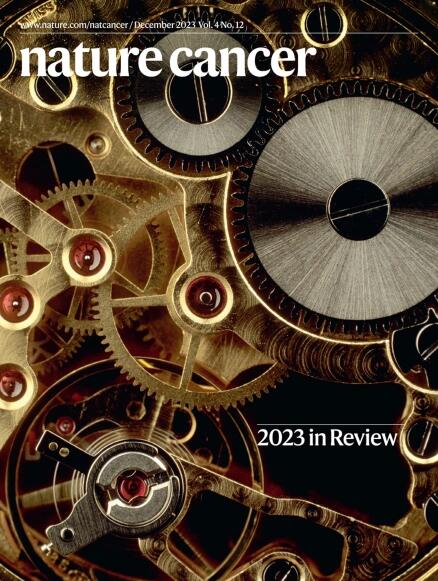A population-based analysis of the molecular landscape of glioma in adolescents and young adults reveals insights into gliomagenesis
IF 28.5
1区 医学
Q1 ONCOLOGY
引用次数: 0
Abstract
Gliomas are a major cause of cancer-related deaths in adolescents and young adults (AYAs; ages 15–39 years). Different molecular alterations drive gliomas in children and adults, leading to distinct biology and clinical consequences, but the implications of pediatric- versus adult-type alterations in AYAs are unknown. Our population-based analysis of 1,456 clinically and molecularly characterized gliomas in patients aged 0–39 years addresses this gap. Pediatric-type alterations were found in 31% of AYA gliomas and conferred superior outcomes compared to adult-type alterations. AYA low-grade gliomas with specific RAS–MAPK alterations exhibited senescence, tended to arise in different locations and were associated with superior outcomes compared to gliomas in children, suggesting different cellular origins. Hemispheric IDH-mutant, BRAF p.V600E and FGFR-altered gliomas were associated with the risk of malignant transformation, having worse outcomes with increased age. These insights into gliomagenesis may provide a rationale for earlier intervention for certain tumors to disrupt the typical behavior, leading to improved outcomes. Bennett et al. conducted a population-based study in adolescents and young adults with gliomas, revealing the specific molecular alterations and identifying potential subclassifications and targets.

以人群为基础的胶质瘤分子景观分析在青少年和年轻人揭示胶质瘤形成的见解。
胶质瘤是青少年和青壮年癌症相关死亡的主要原因。年龄15-39岁)。在儿童和成人中,不同的分子改变驱动胶质瘤,导致不同的生物学和临床后果,但儿童与成人类型的aya改变的含义尚不清楚。我们对1456例0-39岁患者的临床和分子特征胶质瘤进行了基于人群的分析,解决了这一差距。在31%的AYA胶质瘤中发现了儿科型改变,与成人型改变相比,其结果更好。与儿童胶质瘤相比,具有特异性RAS-MAPK改变的AYA低级别胶质瘤表现出衰老,倾向于出现在不同的位置,并且与更好的结果相关,提示不同的细胞起源。半球idh突变、BRAF p.V600E和fgfr改变的胶质瘤与恶性转化的风险相关,随着年龄的增长,结果更差。这些关于胶质瘤形成的见解可能为早期干预某些肿瘤以破坏典型行为提供理论依据,从而改善结果。
本文章由计算机程序翻译,如有差异,请以英文原文为准。
求助全文
约1分钟内获得全文
求助全文
来源期刊

Nature cancer
Medicine-Oncology
CiteScore
31.10
自引率
1.80%
发文量
129
期刊介绍:
Cancer is a devastating disease responsible for millions of deaths worldwide. However, many of these deaths could be prevented with improved prevention and treatment strategies. To achieve this, it is crucial to focus on accurate diagnosis, effective treatment methods, and understanding the socioeconomic factors that influence cancer rates.
Nature Cancer aims to serve as a unique platform for sharing the latest advancements in cancer research across various scientific fields, encompassing life sciences, physical sciences, applied sciences, and social sciences. The journal is particularly interested in fundamental research that enhances our understanding of tumor development and progression, as well as research that translates this knowledge into clinical applications through innovative diagnostic and therapeutic approaches. Additionally, Nature Cancer welcomes clinical studies that inform cancer diagnosis, treatment, and prevention, along with contributions exploring the societal impact of cancer on a global scale.
In addition to publishing original research, Nature Cancer will feature Comments, Reviews, News & Views, Features, and Correspondence that hold significant value for the diverse field of cancer research.
 求助内容:
求助内容: 应助结果提醒方式:
应助结果提醒方式:


